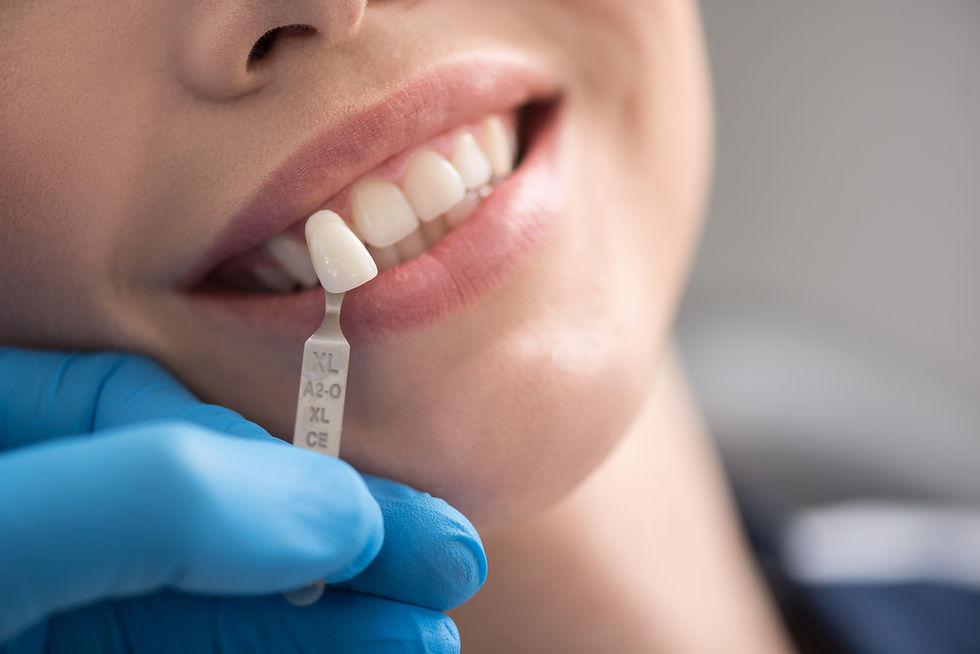Your General and Cosmetic Dentist in Beaverton, Oregon Explains Dental Veneers
- Emergency Dentist Beaverton

- Feb 3, 2020
- 2 min read
Updated: Jan 15, 2021

A dental veneer is a wafer-thin shell of tooth-colored material that fits over the outside of a tooth. Veneers are a popular option for cosmetic dentistry because they are a less intrusive option than dental crowns, and provide much quicker results than braces or aligners. They are also popular because of their wide range of uses: they can be used to brighten and correct discolored teeth, straighten a smile, close gaps, correct a misshapen tooth, and fix fractures and chips. Veneers are also quite durable and resistant to staining, particularly porcelain veneers.
Porcelain is the most commonly used material for veneers. Composite resin is also sometimes used, typically to place same-day veneers, though they are far weaker and more prone to staining than porcelain. With proper care, composite resin veneers will last about 4-8 years, while porcelain veneers can last 10-25 years.

Placing Porcelain Veneers
Placing porcelain veneers typically takes two appointments. Local anesthesia is not usually needed, though it can be administered according to patient sensitivity.
During the first visit, your dentist will examine your teeth to make sure dental veneers are appropriate for you, and you and your dentist will discuss the result you want to achieve. Your dentist will then remove a very thin layer of tooth enamel from the surface of the tooth, about ½ millimeter, and then take an impression of your teeth. This impression is sent to the dental laboratory to fabricate your custom veneers, a process which typically takes 1-2 weeks. In the meantime, the dentist will place a temporary veneer on your tooth.
Once the laboratory delivers the completed porcelain veneer to your dentist, you can go for your second and final visit. In this visit, your dentist will remove the temporary veneer and check the permanent one for fit and color, trimming and adjusting as necessary. Once this has been completed, your tooth and the veneer will be cleaned, polished and etched to ensure a strong
bonding. The dentist places a special adhesive on the veneer, places the veneer on the tooth, and applies a special light to cure and harden the veneer quickly. The final steps involve removing any excess material, evaluating your bite, and making any final adjustments if necessary.

Caring For Your Veneers
Caring for your veneers is easy - simply brush and floss daily as usual! Some patients experience mild increased sensitivity to hot and cold, but it is usually temporary and should resolve itself in a matter of weeks as your tooth adjusts. Your dentist may recommend that you cut down on foods and drinks that may stain or discolor your veneers, such as coffee or red wine.
Patients should also avoid habitual biting or chewing on hard objects (such as nails, pens, ice) and habitual tooth grinding or jaw clenching, as these activities can cause veneers to crack, chip or even dislodge. Patients considering veneers should know too that placing veneers is an irreversible process, since a small amount of tooth enamel must be removed to fit the veneer properly and seamlessly. But for many people, the natural looking results of a beautiful, even smile are well worth it!







